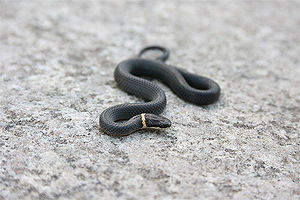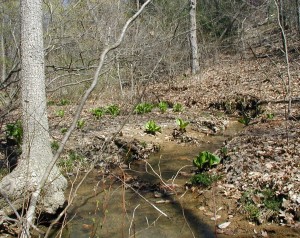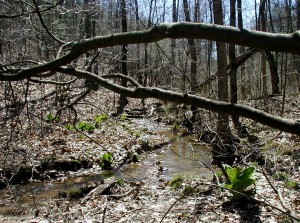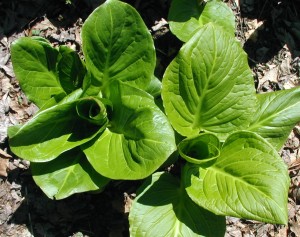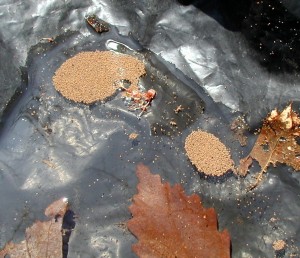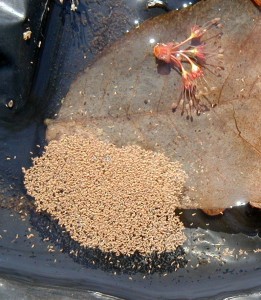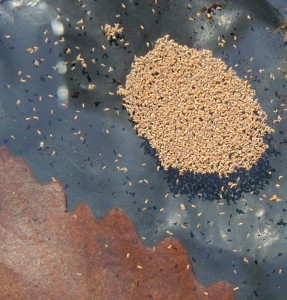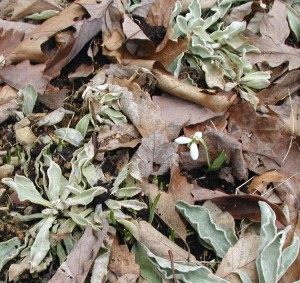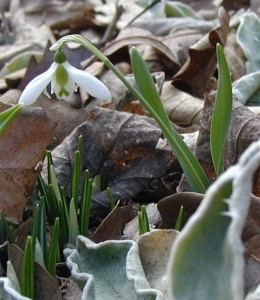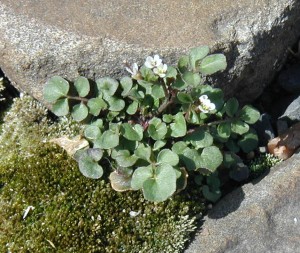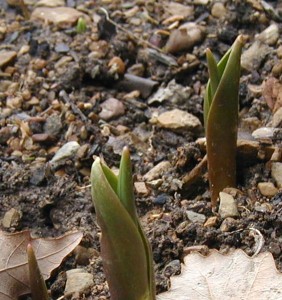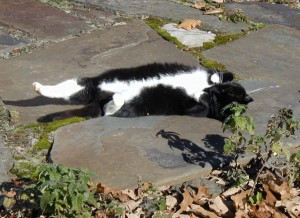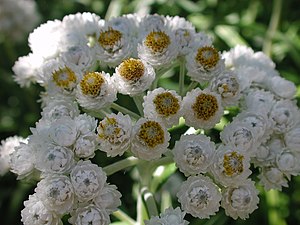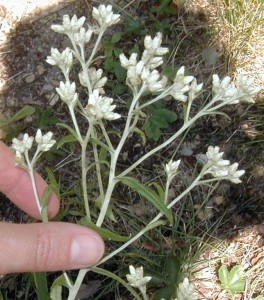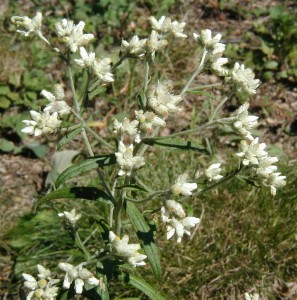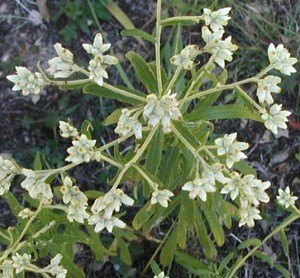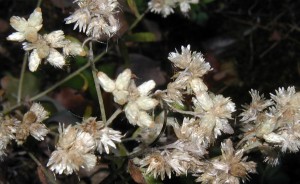On a hike along a mountain ridge we were crossing some hilly terrain as the trail followed a little valley between two large hills. It’s wooded and rocky and the valley has a little creek running through it. The day was warm, but windy.
I saw some slate rock and said to myself to turn over that piece. There might be a salamander under there. Earlier in the week I had seen a couple of lead-backed salamanders under tree bark that was on the ground, so it was fresh in my mind to look for others. Then, just before I turned over the rock I thought – Hey, watch out! There might be something under there! I turned over this brick-sized piece of slate and flipped it back pretty quickly. Instead of a salamander there layed a small black snake all coiled up!
It wasn’t coiled up to strike out, but was probably just laying there resting when some huge creature disturbed it by lifting the roof over its head. Ringnecks apparently do most of their hunting at night so that’s when they will be on the prowl. During the day they will hide among and under rocks and tree bark.
The ringneck snake in Pennsylvania is the Northern Ringneck Snake, Diadophis punctatus edwardsi. It is the only ringneck snake in the Mid-Atlantic, Appalachian and Northeastern United States. It is a sub-species that is related to the Southern Ringneck Snake, Diadophis punctatus punctatus, that can be found in the Southeastern United States. The southern ringneck has a reddish ring around its neck and its underside is redder than the yellow belly of the northern ringneck.
Ringnecks are plain, dark snakes with a light-colored collar or ring around the neck. They only get 10-15 inches long and you probably have to turn over a rock or log to find one. This one was found under a slate rock in a rocky, wooded hillside near a spring-fed stream. A couple years ago we saw a ringneck that was lying among large pieces of bark that had been stripped off logs for firewood. It made itself visible only when pieces of bark were moved and its hiding place disturbed.
If you’re adventurous enough to turn over logs looking for salamanders, use a stick or a gloved hand. At the very least watch where your fingers and feet are because you could easily uncover a nasty snake instead of a sleepy one.
To find out more aoubt our legless freinds and other reptiles, check out Peterson’s Reptile Field Guide.

